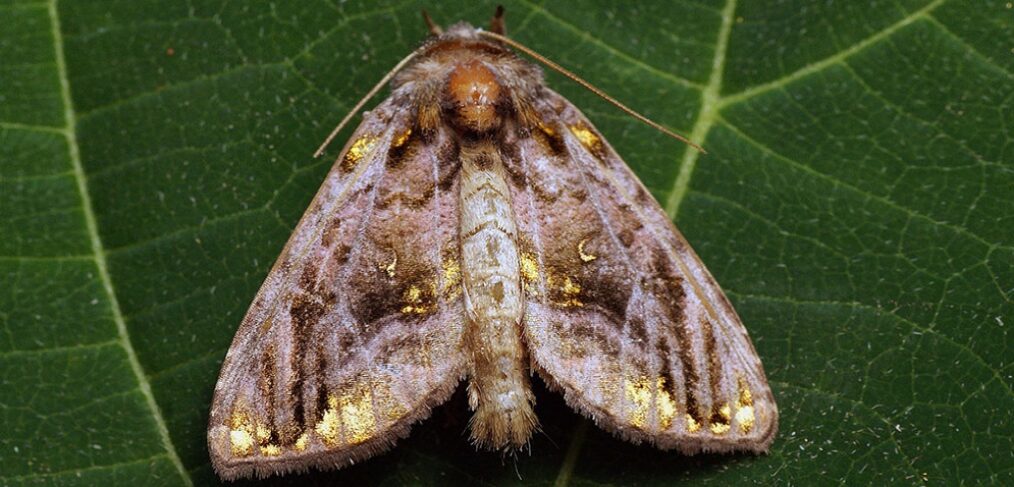
species of the week #79 – Golden C
The beautiful Golden C is a moth and is actually called the lamprotes c-aureum. Because of the typical wing pattern with the golden semicircle, the moth is called the Golden C in many butterfly collections. And not only the adult moth has a peculiar appearance. The caterpillars have also developed a very special appearance to protect themselves from predators: Due to their green-white spotted colouring and the U-shaped posture hanging down from the leaf, many birds mistake the caterpillars for bird droppings and do not even think of eating them.
| Distribution status in Rhineland-Palatinate | Extremely rare |
| Remaining deposit | Upper Rhine, Danube |
| Last sighting in rhineland-palatinate | unknown |
| Habitat | Riparian forests |
| Threat | Loss of riparian forests, eutrophication, parasite infestation |
Unfortunately, the Golden C can only be discovered very rarely, because apart from habitat loss, there are two other problems. Firstly, the eggs are often attacked by ichneumon wasps and other parasitic wasp species. Butterfly research assumes that only very large, stable populations produce enough clutches to compensate for the high loss rates. Secondly, the caterpillar of the meadow rue golden owl feeds exclusively on meadow rue. However, meadow-rue populations are in sharp decline. Meadow-rue, which is the caterpillars’ preferred food in some regions, has not grown in Rhineland-Palatinate for a long time, although other meadow rue species are still present along the Rhine and its tributaries. Other insects specialising in meadow rue are also no longer found in Rhineland-Palatinate. For example, the meadow-rue caterpillar owl is not found in these areas despite the presence of its caterpillar food plant. One conceivable cause is the use of insecticides. Research results show that the mosquito repellents applied throughout the Rhine floodplains also have a negative impact on other insect species. It is unclear whether the Golden C and other floodplain butterfly species are also affected.
The mostly very small-scale riparian forest habitats are also very quickly destroyed by deforestation, littering, sedimentation, droughts and eutrophication. Comprehensive protection of riparian forests and independent review of research findings on insecticide application in riparian forests is urgently needed.
Interested in more species of the week ? Get more
Image: By Ilia Ustyantsev from Russia – Lamprotes c-aureum – Металловидка C-золотое, CC BY-SA 2.0, https://commons.wikimedia.org/w/index.php?curid=74597366
